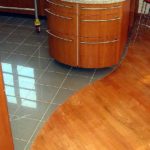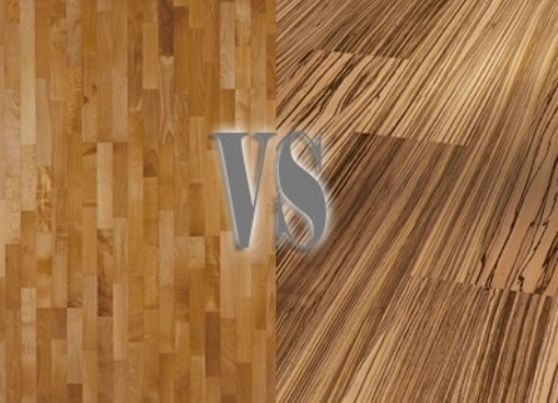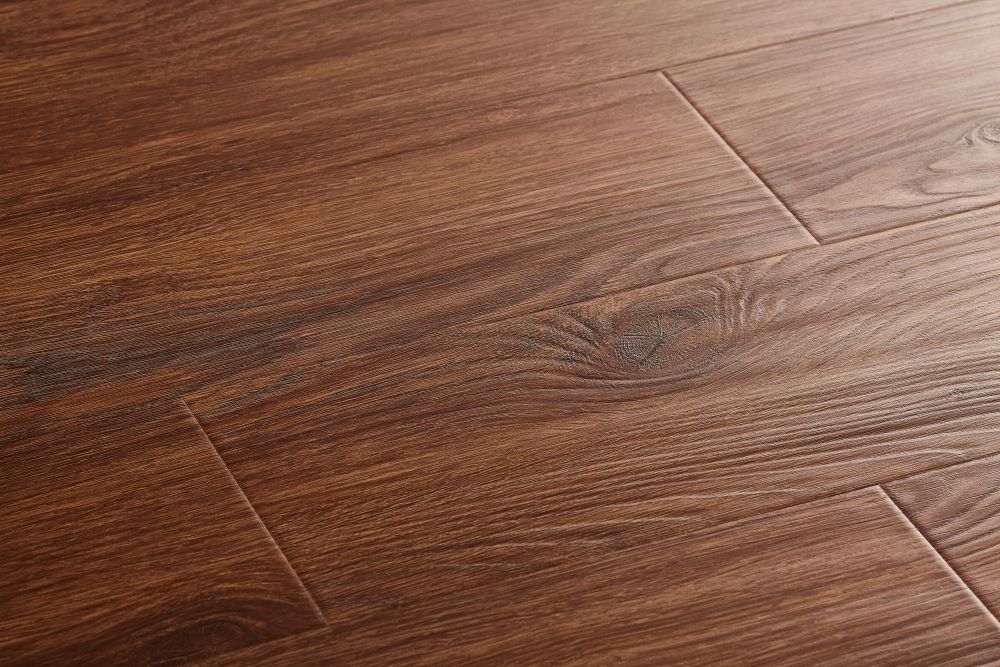How to seal cracks in laminate flooring
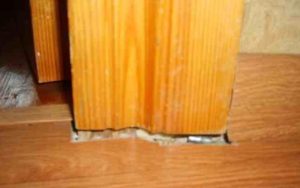 Laminate flooring is distinguished by its beautiful appearance and ease of maintenance. It has dirt- and water-repellent properties. But over time, gaps form between the slats. Simple repairs with low financial costs can be done on your own.
Laminate flooring is distinguished by its beautiful appearance and ease of maintenance. It has dirt- and water-repellent properties. But over time, gaps form between the slats. Simple repairs with low financial costs can be done on your own.
The content of the article
How to seal cracks in laminate flooring
Before purchasing products to remove defects, carefully inspect the floor. If the laminated surface moves away from the walls by a couple of centimeters, or individual slabs are swollen (moisture got inside and nourished the wood fiber), you should think about a major overhaul.
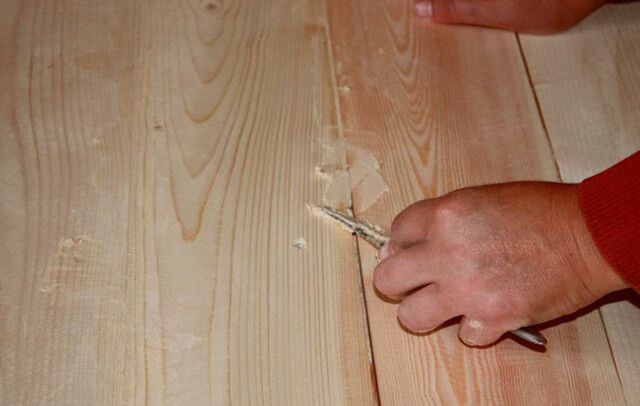
The assortment of construction stores offers:
- putties, mastics;
- pastes, grouts;
- sealants.
IMPORTANT! Grouts and sealants are fillers, and putty is a leveler.
The expanded color range of floor restoration products allows you to choose the right color scheme. If the desired color is not available, choose the closest darker shade in the range.
Putties
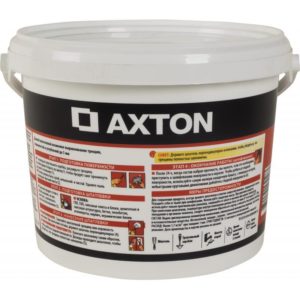 Laminate floor putties are suitable for filling small cracks in corners, near walls and furniture. The repair compound is not flexible and resistant to deformation, so it is not recommended to use it to remove defects in high-traffic areas. Do not fill deep and wide cracks with putty. The thick layer cracks and crumbles over time.
Laminate floor putties are suitable for filling small cracks in corners, near walls and furniture. The repair compound is not flexible and resistant to deformation, so it is not recommended to use it to remove defects in high-traffic areas. Do not fill deep and wide cracks with putty. The thick layer cracks and crumbles over time.
Mastics rather mask defects, seal scratches and minor cracks, and add reagents to the composition for plasticity. The product is more expensive than grout, so if there are a lot of deep cracks, pay attention to the next group.
Grout
 Grouts, compared to putty, set very quickly. In the deep seam cavity they harden and harden evenly. If you use the paste to seal scratches, the product dries instantly and can be removed with a slight movement of the hand with a dry cloth.
Grouts, compared to putty, set very quickly. In the deep seam cavity they harden and harden evenly. If you use the paste to seal scratches, the product dries instantly and can be removed with a slight movement of the hand with a dry cloth.
Mastics, grouts and pastes are made on the basis of wax and polymers. Famous manufacturers add a fungicide to the composition to protect against mold. In this case, the price of the jar will be more expensive.
You can make your own grout paste. To do this, mix wood dust and gypsum in a 1:1 ratio. Dilute with warm water to the consistency of thick sour cream and fill the cavities.
ATTENTION! These products are suitable for small cracks. And if you use a spatula, the consumption of sealing material is small.
Sealants
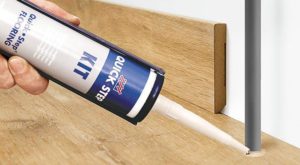 The manufacturer packages the product for sealing in tubes and cylinders with a nozzle. You can simply seal deep cracks with sealant. When purchasing, pay attention to the volume. If the sealant is not completely used, clean the nozzle.
The manufacturer packages the product for sealing in tubes and cylinders with a nozzle. You can simply seal deep cracks with sealant. When purchasing, pay attention to the volume. If the sealant is not completely used, clean the nozzle.
In addition to the main material, purchase a roll of masking tape. The excess sealing material will remain on the paper base - after drying, you will not have to scrape off the dried pieces. It is better to choose a soft rubber spatula. Then, when working, you will protect the surface from scratches.
Why do cracks appear in laminate flooring?
Cosmetic repairs to laminate floors mask external defects. To prevent cracks from forming again, it is necessary to eliminate the possible cause:
- Increased humidity or dry air.Although a moisture-resistant impregnation is applied to the surface of the laminated board, if the connection is weak and there is high humidity in the room, the wood fibers become saturated with water, forming bumps in the center and cracks at the edges. In a dry room, laminate will dry out and crack. Of course, this is not a solid board, but there are isolated cases.
- Improper care Floors covered with laminate can be wiped with a damp cloth. But don't fill it with water. Make sure that water from the trays when watering flowers does not form puddles on the floor, that radiators do not leak, and that pets relieve themselves in the tray and not where they have to.
- Incorrect installation. Manufacturers produce different types of laminate flooring: three or five layers, with a “lock” for fastening or grooves where glue is used during installation. And cheap laminate (not because of the store’s pricing policy, but because of low-quality components) will last less.
If:
- The design uses several types of laminate from different manufacturers with different types of fastening;
- the builders were in a hurry and did not secure the “locks” properly;
- the board is laid diagonally (needs to be cut at an angle);
- the floor leveling technique is not followed, the wrong underlay is chosen, too much gap is left from the wall for the laminate to “float” - over time, the distance between the laminated boards increases, and wide gaps appear.

ATTENTION! Small and unnoticeable cracks at first can lead to repairs to the entire floor, so don't put off fixing it until later.
How to prevent cracks from appearing in the floor
As doctors say: “It’s easier to prevent a disease.” To prevent cracks in the laminate flooring from appearing again, follow a few rules:
- Keep the floor clean.Ideally, first remove debris with a vacuum cleaner (this will prevent the gaps from accumulating dirt), and then wipe with a damp cloth.
- Remove spilled water promptly. If laminate is installed in a bathroom or toilet, consider additional water-repellent treatment of the joints.
- Take care of a comfortable climate in the room: use moisture concentrators and humidifiers if necessary.
- Fix small scratches and cracks immediately.
- Use soft felt pads under the legs of cabinets and sofas. Then there will be no scratches when moving. Or add a soft carpet if the furniture needs to be moved.
Following recommendations for prevention and repair will help keep your flooring looking attractive longer.



